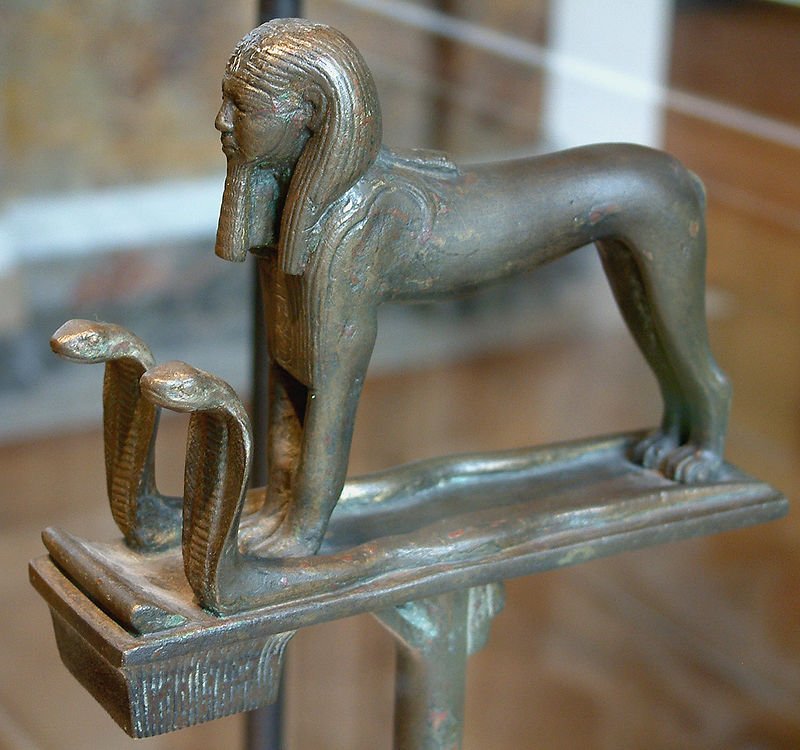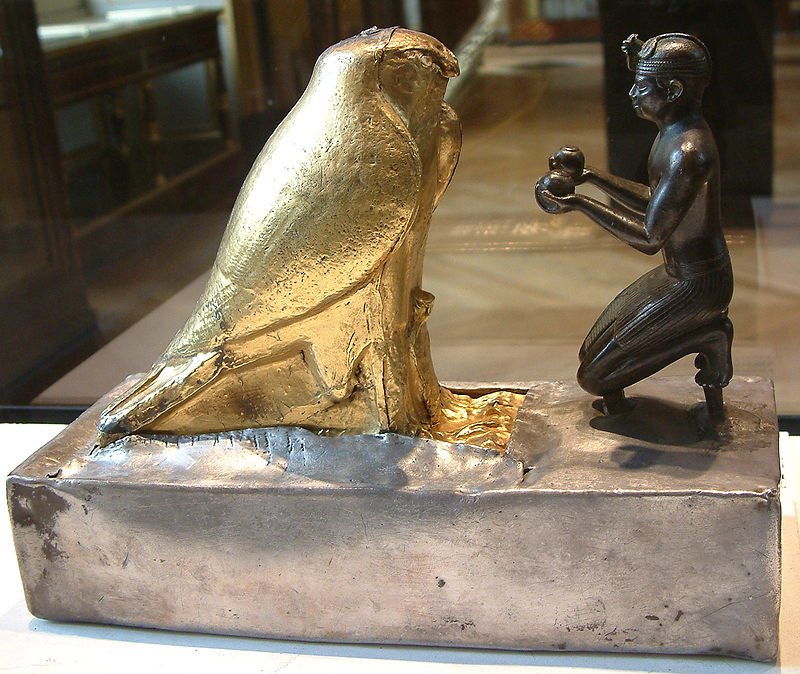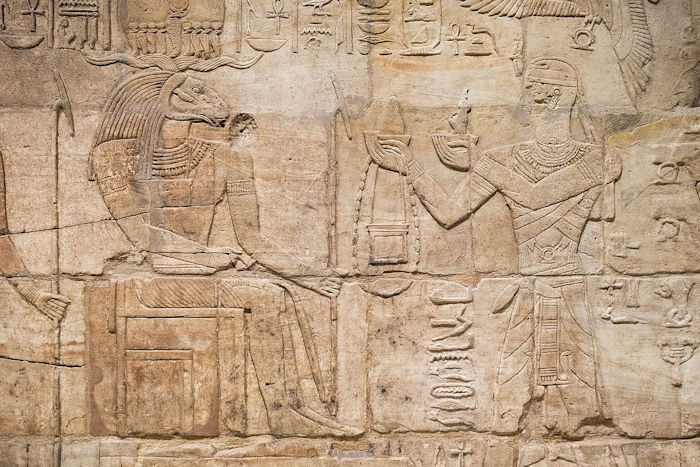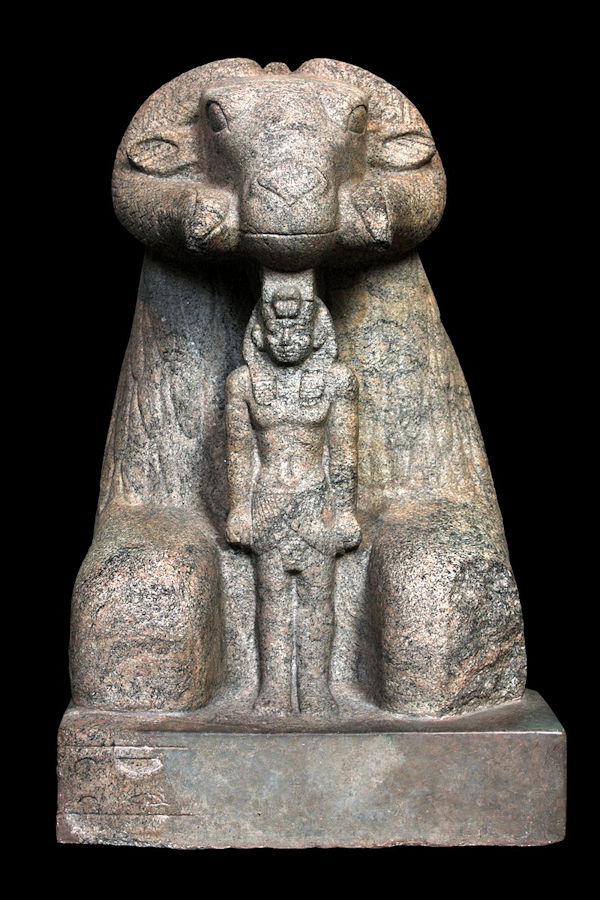Taharqa – The Most Powerful Of The Black Pharaohs
Ellen Lloyd - AncientPages.com - Ancient Egypt is often depicted as an autonomous, stand-alone realm that remained untouched and unaffected by its surrounding African cultures.
There is, however, historical evidence that the balance of power shifted, where the cultures of Egypt and the rest of Africa met and mingled, prompting a revival and reinterpretation of Egyptian customs, gods, and cultural modes of expression.
Taharqa as a sphinx. Credit: Wikipedia/Louvre Museum - CC BY-SA 3.0
For more than 2,000 years, Egypt was the stronger player in the balance of power between itself and its neighboring kingdom to the south, Nubia.
Taharka was the most powerful of the black pharaohs
Taharqa was the son of Piye and the cousin and successor of Shebitku. He was a pharaoh of the Ancient Egyptian 25th dynasty and king of the Kingdom of Kush in Northern Sudan. He reigned between 690 and 664 BC.
Taharqa, "The Black Pharaoh," focuses on a particular chapter in the history of Egypt: from around 750 BCE and in the century that followed, the Nubian rulers upset this balance, seizing the power of Egypt.
Taharqa - life and death of the pharaoh
When Shabaka conquered Lower Egypt and became Nubian king, he was accompanied by his nephew Taharqa, who was about age 20. Later, during Shabaka's reign as pharaoh, Egypt confronted the growing might of Assyria on the battlefield.
During this encounter, Taharqa was at the head of the Egyptian army. However, from a historical point of view, it remains unclear whether the two forces fought. Taharqa's brother Shabataka succeeded Shabaka, making Taharqa his coregent to ensure his succession. About 688 BC, approximately 23 years after the Nubian rule had been imposed over Egypt, Taharqa assumed the throne in his own right.
The next few years were peaceful. Taharqa wanted to control and know about significant events in the neighboring Asian countries. He, therefore, decided to move his capital to Tanis in the Delta.
Granite sphinx of Taharqa, 25th Dynasty, c. 690-664 BC. This statue from Kawa (Temple T) in Sudan shows the Pharaoh's face on a Lion figured sphinx, a form of royal representation borrowed from Middle and New Kingdom art. Credit: Narcissistic Nubian - CC BY-SA 4.0
By 671 BC. Egypt and Assyria again approached a confrontation, so Taharqa prepared to fight for the continued survival of Egypt. But the Assyrian king, Esarhaddon, crossed the Sinai Desert and defeated Taharqa's army on the frontier. In 2 weeks, he was besieging Memphis. The Egyptian military crumbled under the attack of the better-disciplined Assyrian army, armed with iron weapons.
Taharqa fled to Upper Egypt, leaving Esarhaddon to take control of Lower Egypt. Two years later, Taharqa returned with a fresh army and managed to recover possession of the Delta. Still, this success was short-lived, and Esar-haddon's successor, Ashurbanipal, drove Taharqa south again.
It was his final defeat, and he never again tried to campaign in the north. Egypt then entered into a long era of successive foreign rulers.
Taharqa was described by the Ancient Greek historian Strabo as having "Advanced as far as Europe" and (citing Megasthenes) even as far as the Pillars of Hercules in Spain.
Taharqa offers wine jars to Falcon-god Hemen. Image credit: Guillaume Blanchard. Credit: Credit: Wikipedia/Louvre Museum - CC BY-SA 3.0
In biblical depictions, he is the savior of the Hebrew people, as they are being besieged by Sennacherib (Isaiah 37:8-9, & 2 Kings 19:8-9).
Taharqa died in Thebes in 664 BC and was buried at Nuri - North Sudan. His successor was Tantamani, a son of Shabaka.
Evident archaeological traces of the Nubians in ancient Egypt
During his period of Egyptian rule, Taharqa encouraged many architectural projects. The same can be said about his Nubian predecessors. He erected monuments at Karnak, Thebes, and Tanis in Lower Egypt and built several prominent temples in Cush, Egypt's neighbor to the south. Cush played an important role in biblical history.
Pharaoh Taharqa and the gods of Thebes. Standing on the left, he offers "a white loaf" to his father Amun-Re, who is accompanied by Mut, Khonsu, and Montu, Kawa Temple. Credit: Anthony Huan - CC BY-SA 2.0
According to 2 Kings 19:9, "Tirhakah, King of Cush," came to the aid of Hezekiah against Sennacherib, king of Assyria, when his forces laid siege to Jerusalem in 701 BC.
Without such aid, it is hard to imagine that the Kingdom of Judah would have survived.
Taharqa's large temple in Kawa was built on the orders of Taharqa and dedicated to the sun and fertility god Amun-Re. It was intended to give help Taharqa in ruling over his vast kingdom.
It was abandoned in the 3rd century AD and lay buried in sand until excavations in 1930.
Taharqa's shrine is the largest intact Egyptian building in this country.
Archaeologists excavating in Egypt have discovered temples with Nubian inscriptions and highly sophisticated Nubian artifacts inside tombs and palaces. Many archaeological finds were excavated in Meroë and Kawa in present-day Sudan.
Granite statue of Amun in the form of a ram protecting King Taharqa, British Museum. Credit: Rama - CC BY-SA 2.0 fr
Archaeologists and historians have been working hard to preserve the ancient Nubian legacy.
The invading forces from the south appear almost more Egyptian than the Egyptians themselves. Pyramids are built, old traditions and gods are revived, and the new regime appropriates hieroglyphs and Egyptian iconography.
African roots of the Nubians are apparent in connection with their funerary customs and how their culture remained strongly influenced by Egypt even after they retreated to Nubia.
These fascinating findings show that Egyptian and African traits and cultures fuse.
Updated on March 06, 2023
Written by - Ellen Lloyd – AncientPages.com
Copyright © AncientPages.com All rights reserved. This material may not be published, broadcast, rewritten or redistributed in whole or part without the express written permission of AncientPages.com
Expand for referencesMore From Ancient Pages
-
 The Real Paleo Diet: New Archaeological Evidence Changes What We Thought About How Ancient Humans Prepared Food
Featured Stories | Nov 28, 2022
The Real Paleo Diet: New Archaeological Evidence Changes What We Thought About How Ancient Humans Prepared Food
Featured Stories | Nov 28, 2022 -
 Ostrich Eggshell Beads Reveal 50,000-Year-Old Social Network Across Africa
Archaeology | Dec 21, 2021
Ostrich Eggshell Beads Reveal 50,000-Year-Old Social Network Across Africa
Archaeology | Dec 21, 2021 -
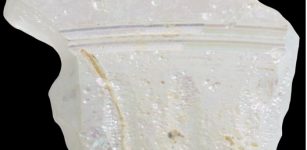 New Method Distinguishes Between Egyptian And Palestinian Glass During Roman Times
Archaeology | Jul 13, 2020
New Method Distinguishes Between Egyptian And Palestinian Glass During Roman Times
Archaeology | Jul 13, 2020 -
 Ignored Archaeological Discovery At Puma Punku That Could Re-Write Ancient History
Ancient Mysteries | May 11, 2020
Ignored Archaeological Discovery At Puma Punku That Could Re-Write Ancient History
Ancient Mysteries | May 11, 2020 -
 Ancient Oil Lamp Shop Discovered In Aizanoi, The Second Ephesus
Archaeology | Nov 22, 2021
Ancient Oil Lamp Shop Discovered In Aizanoi, The Second Ephesus
Archaeology | Nov 22, 2021 -
 Spells, Charms, Erotic Dolls: Love Magic In The Ancient Mediterranean
Featured Stories | Oct 24, 2022
Spells, Charms, Erotic Dolls: Love Magic In The Ancient Mediterranean
Featured Stories | Oct 24, 2022 -
 Stone Age People Used Human Bones For Making Pendants
Archaeology | Jul 6, 2022
Stone Age People Used Human Bones For Making Pendants
Archaeology | Jul 6, 2022 -
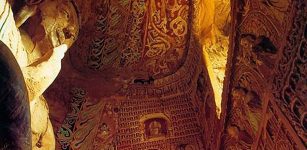 Yungang Grottoes: Marvellous Example Of Ancient Buddhist Rock-Cut Architecture
Civilizations | Sep 10, 2015
Yungang Grottoes: Marvellous Example Of Ancient Buddhist Rock-Cut Architecture
Civilizations | Sep 10, 2015 -
 Seven Times People Discovered The Americas And How They Got There
Featured Stories | Sep 9, 2022
Seven Times People Discovered The Americas And How They Got There
Featured Stories | Sep 9, 2022 -
 Forbidden Knowledge: Secret Ancient Gates Of The Shining Ones – The Beginning – Part 1
Ancient Mysteries | Jul 12, 2019
Forbidden Knowledge: Secret Ancient Gates Of The Shining Ones – The Beginning – Part 1
Ancient Mysteries | Jul 12, 2019 -
 Vijayanagara – ‘City Of Devas – Shining Ones’ – Place Where Mythology And History Coexist
Civilizations | Jun 21, 2015
Vijayanagara – ‘City Of Devas – Shining Ones’ – Place Where Mythology And History Coexist
Civilizations | Jun 21, 2015 -
 1.2-Million-Year-Old Obsidian Axe Made By Unknown Human Species Discovered In Ethiopia
Archaeology | Jan 25, 2023
1.2-Million-Year-Old Obsidian Axe Made By Unknown Human Species Discovered In Ethiopia
Archaeology | Jan 25, 2023 -
 Mahabalipuram: Ancient Ruined City And Its Marvellous Rock-Cut Architecture In South India
Featured Stories | Jul 25, 2021
Mahabalipuram: Ancient Ruined City And Its Marvellous Rock-Cut Architecture In South India
Featured Stories | Jul 25, 2021 -
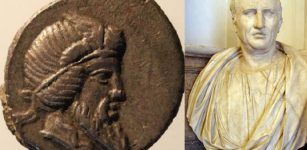 Scientists Solve The Mystery Of Cicero’s Puzzling Words By Analyzing Ancient Roman Coins – Evidence Of Financial Crisis?
Artifacts | Apr 6, 2022
Scientists Solve The Mystery Of Cicero’s Puzzling Words By Analyzing Ancient Roman Coins – Evidence Of Financial Crisis?
Artifacts | Apr 6, 2022 -
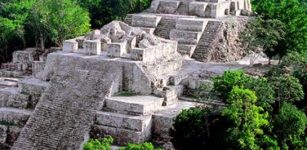 El Mirador: Ancient Pyramids Hidden In The Lost City Of The Maya
Featured Stories | Aug 1, 2018
El Mirador: Ancient Pyramids Hidden In The Lost City Of The Maya
Featured Stories | Aug 1, 2018 -
 Baby Carriers Were Used 10,000 Years Ago – New Evidence
Archaeology | Sep 27, 2022
Baby Carriers Were Used 10,000 Years Ago – New Evidence
Archaeology | Sep 27, 2022 -
 Queen Marie Antoinette’s Silk Shoe Auctioned In Versailles
Artifacts | Nov 17, 2020
Queen Marie Antoinette’s Silk Shoe Auctioned In Versailles
Artifacts | Nov 17, 2020 -
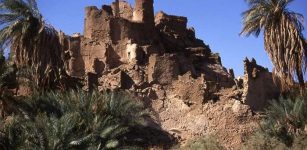 Mysterious Ancient Fortified City Of Djado On Dangerous Journey Across Sahara
Civilizations | Jun 4, 2023
Mysterious Ancient Fortified City Of Djado On Dangerous Journey Across Sahara
Civilizations | Jun 4, 2023 -
 Evidence Of An Unknown Ancient Civilization In The Yucatan?
Featured Stories | Apr 6, 2024
Evidence Of An Unknown Ancient Civilization In The Yucatan?
Featured Stories | Apr 6, 2024 -
 Remains Of A 2,300-Year-Old Sunken Ship Discovered At Alamein Shore
Archaeology | Aug 12, 2023
Remains Of A 2,300-Year-Old Sunken Ship Discovered At Alamein Shore
Archaeology | Aug 12, 2023

